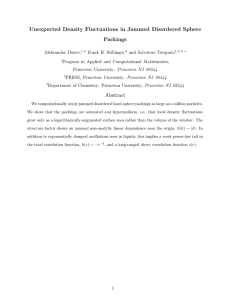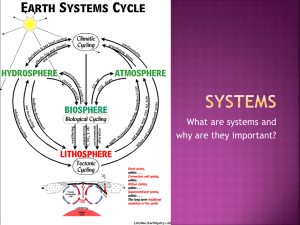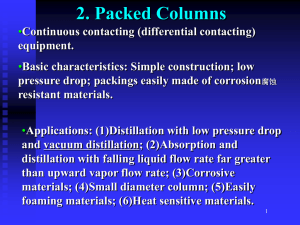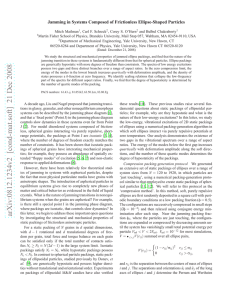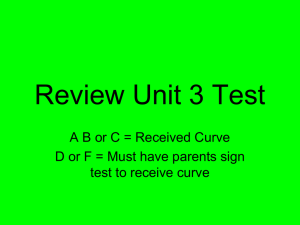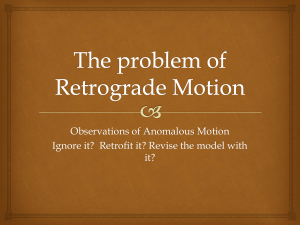Force - Benjamin Levich Institute
advertisement
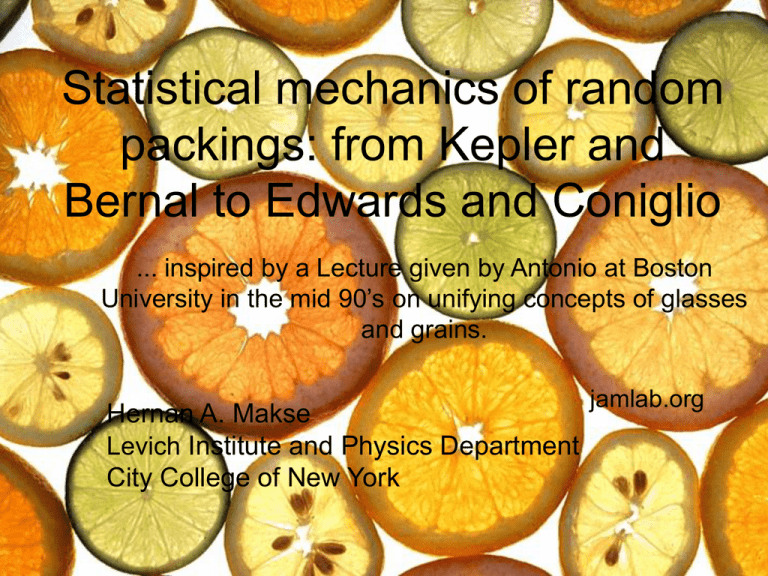
Statistical mechanics of random packings: from Kepler and Bernal to Edwards and Coniglio ... inspired by a Lecture given by Antonio at Boston University in the mid 90’s on unifying concepts of glasses and grains. Hernan A. Makse Levich Institute and Physics Department City College of New York jamlab.org Random packings of hard spheres Physics Granular matter Random close packing (RCP) Bernal experiments (1960) Mathematics Engineering Kepler conjecture Kepler (1611) One of the twenty-three Hilbert's problems (1900). Pharmaceutical industry Solved by Hales using computerassisted proof (~2000). Information theory Glasses Shannon (1948) Mining & construction (I) Unifying concepts of glasses and grains Coniglio, Fierro, Herrmann, Nicodemi, Unifying concepts in granular media and glasses (2004). Signals → High dimensional spheres (II) High-dimensional packings (III) Polydisperse and non-spherical packings Theoretical approach I: Theory of hard-sphere glasses (replica theory) Jammed states (infinite pressure limit) Replica theory: jammed states are the infinite pressure limit of long-lived metastable hard sphere glasses Parisi and Zamponi, Rev. Mod. Phys. (2010) Schematic mean-field phase diagram of hard spheres • Approach jamming from the liquid phase. • Predict a range of RCP densities • Mean field theory (only exact in infinite dimensions). Theoretical approach II: Statistical mechanics (Edwards’ theory) Edwards and Oakeshott, Physica A (1989), Ciamarra, Coniglio, Nicodemi, PRL (2006). Statistical mechanics Hamiltonian Energy Statistical mechanics of jammed matter Volume function Volume Microcanonical ensemble Number of states Entropy Canonical partition function Temperature Compactivity Free energy Assumption: all stable configurations are equally probable for a given volume. The partition function for hard spheres Volume Ensemble + Force Ensemble 1. The Volume Function: W (geometry) 2. Definition of jammed state: force and torque balance Solution under different degrees of approximations 1. Full solution: Constraint optimization problem T=0 and X=0 optimization problem: Computer science 2. Approximation: Decouple forces from geometry. 3. Edwards for volume ensemble + Isostaticity Song, Wang, and Makse, Nature (2008) Song, Wang, Jin, Makse, Physica A (2010) 4. Cavity method for force ensemble Bo, Song, Mari, Makse (2012) The volume function is the Voronoi volume Voronoi particle Important: global minimization. Reduce to to one-dimension Coarse-grained volume function Excluded volume and surface: No particle can be found in: V Similar to a car parking model (Renyi, 1960). Probability to find a spot with in a volume V Coarse-grained volume function Particles are in contact and in the bulk: Bulk term: mean free volume density Contact term: z = geometrical coordination number mean free surface density Prediction: volume fraction vs Z Equation of state agrees well with simulations and experiments Aste, JSTAT 2006 X-ray tomography 300,000 grains Theory Phase diagram for hard spheres Song, Wang, and Makse, Nature (2008) Isostatic plane Forbidden zone no disordered jammed packings can exist Disordered Packings Decreasing compactivity X 0.634 Jammed packings of highdimensional spheres P>(c) in the high-dimensional limit (I) Theoretical conjecture of g2 in high d (neglect correlations) Torquato and Stillinger, Exp. Math., 2006 Parisi and Zamponi, Rev. Mod. Phys., 2010 3d Large d (II) Factorization of P>(c) Background term (mean-field approximation) Contact term Comparison with other theories Edwards’ theory Isostatic packings (z = 2d) with unique volume fraction Jin, Charbonneau, Meyer, Song, Zamponi, PRE (2010) Agree with Minkowski lower bound Random first order transition theories (glass transition) (I) Density functional theory (dynamical transition) Kirkpatrick and Wolynes, PRA (1987). (II) Mode-coupling theory: Kirkpatrick and Wolynes, PRA (1987); Ikeda and Miyazaki, PRL (2010) (III) Replica theory: Parisi and Zamponi, Rev. Mod. Phys. (2010) Isostatic packings (z = 2d) with ranging volume fraction increasing with dimensions • No unified conclusion at the mean-field level (infinite d). Neither dynamics nor jamming. • Does RCP in large d have higher-order correlations missed by theory?: Test of replica th. • Are the densest packings in large dimensions lattices or disordered packings? Beyond packings of monodisperse spheres Polydisperse packings Non-spherical packings Platonic and Archimedean solids Torquato, Jiao, Nature (2009) Glotzer et al, Nature (2010). Clusel et al, Nature (2009) Ellipses and ellipsoids • Higher density? • New phases (jammed nematic phase)? Donev, et al, Science (2004) A first-order isotropic-to-nematic transition of equilibrium hard rods, Onsager (1949) Voronoi of non-spherical particles Spheres Dimers Spherocylinders Ellipses and ellipsoids Triangles The Voronoi of any nonspherical shape can Tetrahedra be treated as interactions between points and lines 17 Generalizing the theory of monodisperse sphere packings Theory of monodisperse spheres Polydisperse (binary) spheres Non-spherical objects (dimers, triangles, tetrahedrons, spherocylinders, ellipses, ellipsoids … ) Distribution of radius P(r) Extra degree of freedom Distribution of angles P( ) Result of binary packings Binary packings RCP (Z = 6) Danisch, Jin, Makse, PRE (2010) Results for packings of spherocylinders Baule, Makse (2012) Spherocylinder = 2 points + 1 line. Interactions reduces to 9 regions of line-points, line-line or point-point interactions. Prediction of volume fraction versus aspect ratio: agrees well with simulations Same technique can be applied to any shape. Theory Cavity Method for Force Ensemble Edwards volume ensemble predicts: Cavity method predicts Z vs aspect ratio: Forces 23 24 No solution Z=2d Solutions exist 25 26 A phase diagram for hard particles of different shapes Phase diagram for hard spheres generalizes to different shapes: Ellipsoids FCC Spherocylinders Dimers Spheres: ordered branch (simulations) RCP RLP Spheres: disordered branch (theory) Conclusions 1. We predict a phase diagram of disordered packings 2. We obtain: RCP and RLP Distribution of volumes and coordination number Entropy and equations of state 3. Theory can be extended to any dimension: Volume function in large dimensions: Isostatic condition: Same exponential dependence as Minkowski lower bound for lattices. Definition of jammed state: isostatic condition on Z z = geometrical coordination number. Determined by the geometry of the packing. Z =mechanical coordination number. Determined by force/torque balance. Sphere packings in high dimensions Sloane Signal Most efficient design of signals (Information theory) Sampling theorem Optimal packing (Sphere packing problem) High-dimensional point Rigorous bounds Minkowsky lower bound: Kabatiansky-Levenshtein upper bound: Question: what’s the density of RCP in high dimensions?

